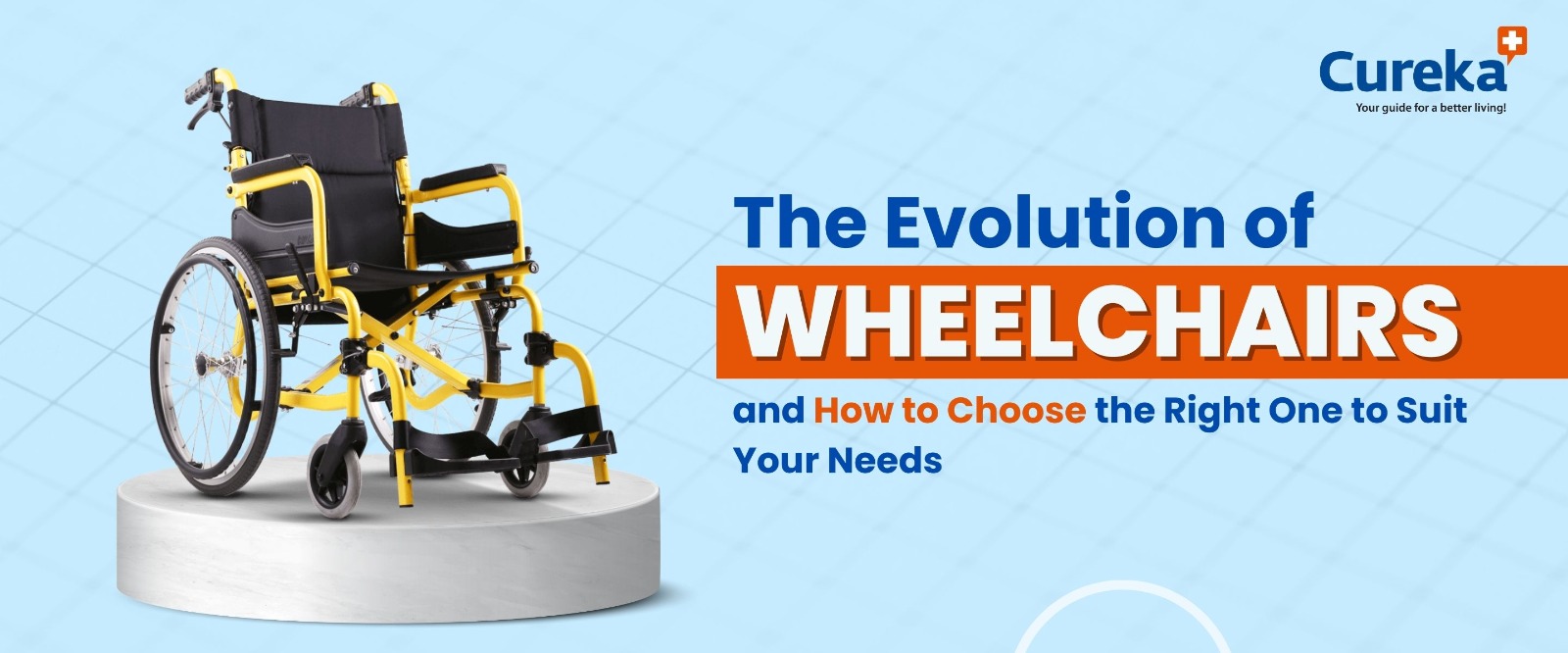The Evolution of Wheelchairs and How to Choose the Right One to Suit Your Needs
The Evolution of Wheelchairs
The journey of wheelchair is remarkable, constantly improving features to enhance mobility and accessibility for people with disabilities.
Early Wheelchair: Historical records indicate that wheel chair date back to ancient civilizations, with early designs featuring wooden frames and large wheels. These early models were often difficult to maneuver.
Innovations of Wheelchair: In the 19th century, innovations like folding wheel chair were introduced, making it easier to transport and store these devices. Later, the development of lightweight, manually-operated wheel chair marked a significant advancement. Materials such as aluminum and steel were used to create more durable and portable wheel chair.
Electric Wheelchairs: Electric or power wheel chair emerged in the mid-20th century, providing greater independence and mobility for individuals with limited upper body strength. These wheelchair are powered by batteries and offer various control options. Nowadays, it is uplifted as charging one.
Sports Wheelchair: Specialized sports wheel chair were developed in order to fulfill the needs of athletes who have disabilities. These wheelchair are designed for specific sports like basketball, rugby, and racing, with features optimized for performance in those activities.
Smart Wheelchair: Recent advancements include smart wheelchair equipped with sensors, navigation systems, and connectivity features to enhance user experience and safety. Also, these are designed for outdoor and rough terrain use became available, enabling users to explore more diverse environments.
Accessibility and Future: Wheel chair design has been developed to focus on user comfort, and customization, allowing users to personalize their wheel chair for optimal support and mobility. Efforts have been made to improve the accessibility of public spaces, including ramps, elevators, and accommodations for wheel chair users, enhancing overall mobility and social inclusivity.
Ongoing research and development continue to drive innovation in wheel chair, with a focus on improving materials, energy efficiency, and incorporating advanced technologies like robotics and AI for greater independence.
Checklist for Choosing the Right Wheelchair
- Assess Your Mobility Needs: Start by identifying the purpose of the wheel chair. Is it for full-time use, occasional outings, or specific activities like sports? Evaluate your mobility limitations, such as your upper body strength, injury condition, and balance. Seek guidance from a physical therapist, doctor, or healthcare provider to address your needs. They can conduct assessments to determine the most suitable wheel chair type and features for your specific condition.
Consider where you’ll primarily use the wheel chair, whether indoors, outdoors, or both.
Think about the types of terrain and obstacles you’ll encounter, as this will influence the choice of wheels and tires.
- Consider the Types of Wheelchairs:
Manual Wheelchair: These are propelled by the user or a caregiver and are suitable for individuals with good upper body strength and mobility.
Power Wheelchair: Powered by a motor, these are ideal for people with limited upper body strength or stamina.
Transport Chairs: Lightweight and designed for occasional use, especially for travel purposes.
Sports Chairs: Highly specialized for athletic activities like basketball, rugby, or racing.
- Checkout the Wheelchair Size:
Spend time for checking out the proper measurements for seat width, depth, and height are crucial for comfort and support. Ensure the wheelchair weight capacity meets your needs to ensure safety and durability.
- Seating and Positioning:
Choose a wheelchair with customizable options for backrests, cushions, and footrests to provide optimal comfort and support.
If pressure relief is a concern, explore specialized seating options, like gel cushions or air-filled cushions.
If the user is unable to move around, you may choose a wheelchair with commode facility to access toiletering activities.
- Look for Other Features too
Determine which accessories, such as armrests, leg rests, neck rest, or trays, are necessary for your comfort and daily activities. Decide whether you’ll self-propel or require assistance. This decision will influence the choice of wheel size and type. For self-propulsion, consider the ergonomics of the hand rims and the ease of pushing.
Don’t forget to note about the wheelchair weight and how easily it can be transported in your vehicle or stored when not in use. Consider foldable wheelchair for convenient storage and transport.
- Try Before You Buy:
- Test different wheelchair models to ensure they meet your comfort and maneuverability needs.
- Check if the wheelchair can easily fit through doorways and into your vehicle, if required.
- Ask for recommendations from healthcare providers, support groups, or individuals who use wheelchair.
- Maintenance and Repairs:
Regular maintenance is crucial for safety and longevity. Carefully go-through the manual and follow the instructions provided. Understand the maintenance requirements of your chosen wheelchair model and inquire about warranty coverage.
Ensure the wheelchair is equipped with proper safety features, including effective brakes and stability mechanisms.
Takeaway,
Choosing the right wheelchair is a comprehensive process that involves careful consideration of your unique needs and preferences, as well as its features. By following these steps and seeking professional advice, you can make a perfect decision that enhances your mobility and quality of life.














